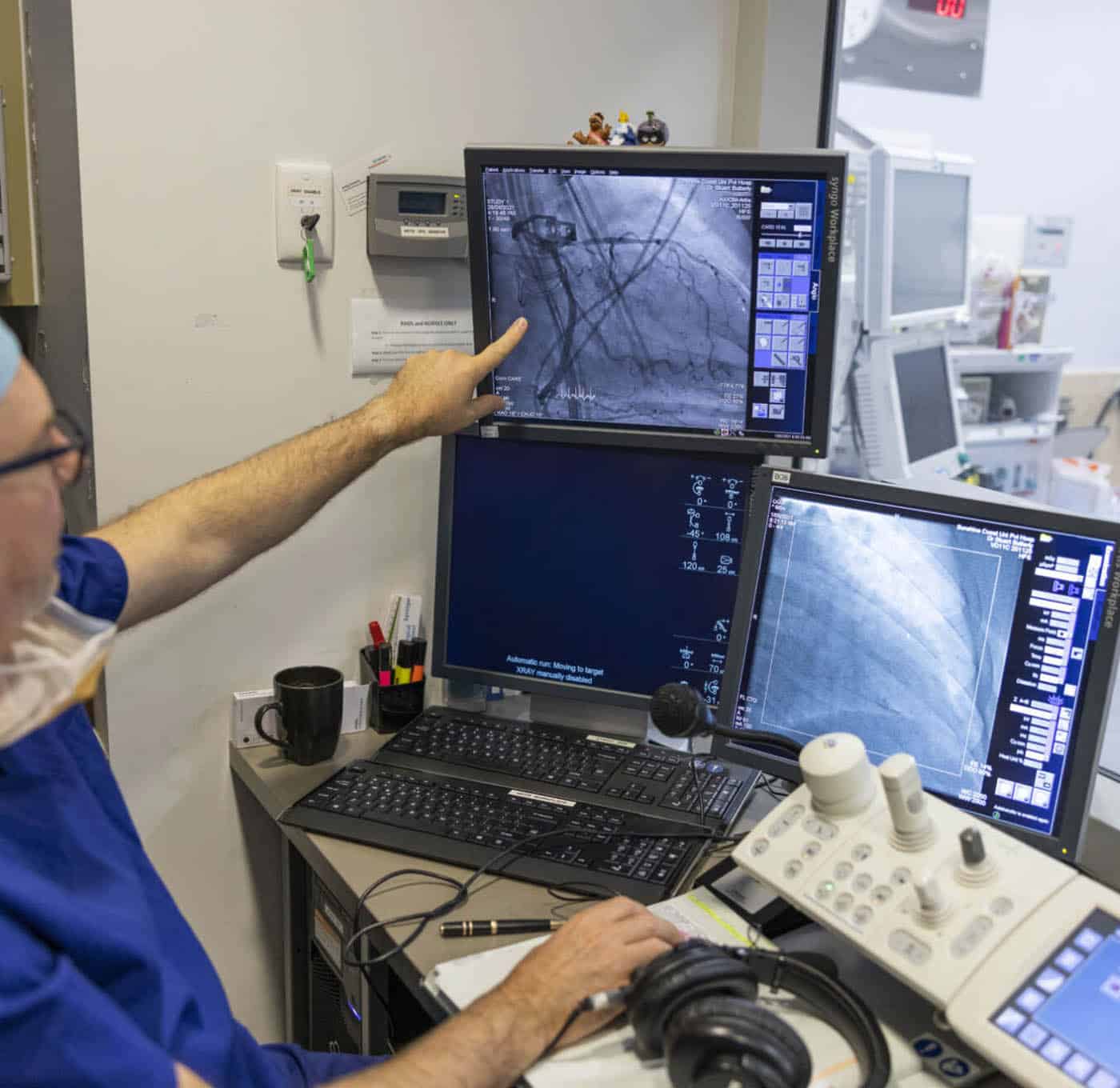Coronary angiogram
A coronary angiogram is a very common procedure. It’s used to see if your coronary arteries have narrowed or become blocked, making it difficult for blood to pass through them.

Your doctor has recommended you undergo a procedure called a coronary angiogram.
You might not have heard this medical term before now and may be feeling unsure about the nature of the procedure.
This information sheet will outline what the procedure is and what risks are involved.
After you read this information sheet, you might still have questions. If you do, please contact the team at Heart HQ. We’re here to help.
What’s a coronary angiogram?
A coronary angiogram is a very common procedure. It’s used to see if your coronary arteries have narrowed or become blocked, making it difficult for blood to pass through them.
Angiograms are performed in hospital, usually you will stay for the day or for one night.
Your doctor may ask you to have some blood tests or change your medications before this procedure. You don’t need to shave before you come.
You cannot eat or drink for 6 hours before the procedure.
How does it work?
The team caring for you includes the cardiologist, an anaesthetist, nurses and a radiographer. You will be closely monitored at all times. There will be x-ray and monitoring equipment in the room with you.
An intravenous line (IV) will be placed into a vein in your arm. This is for the medical team to administer medication during or after your procedure.
You will receive an injection of local anaesthetic before a catheter (a very fine tube) is put into the artery in your groin or wrist. Sometimes a sedative will also be given.
Your doctor will carefully pass the catheter tube through each of the coronary arteries. We will inject small amounts of x-ray contrast (dye) into each artery. X-ray pictures will be taken as the dye flows through. These will show any blockages or narrowing of the arteries.
The dye may also be directed into the left ventricle, so your doctor can measure the size of your heart and see how well it is pumping blood.
Some people who have a coronary angiogram may also have an intravascular ultrasound (IVUS) or an optical coherence tomography (OCT) at the same time. These procedures use soundwaves or light to produce an image of coronary arteries, allowing your doctor to assess their condition. This will be done while the catheter is still in the artery.
Once the procedure is finished, we will remove the catheter and apply pressure to the entry site to stop any bleeding. This entry point in your wrist will be closed with a special arm band. If your groin is the entry point, a special stitch or plug may be used.
You will be monitored after the procedure in the radial lounge.
How do we continue treatment after the procedure?
After the procedure, your doctor will use your results to determine the best course of treatment. This could simply be prescribed medication/s. Another common treatment is a procedure called angioplasty. This is a similar angiogram procedure, which involves inserting a small balloon into your artery to widen and unblock it (see other information sheet). Alternatively, if indicated by the results of the angiogram, you may be advised to have an operation such as a coronary artery bypass graft (bypass surgery).
What kind of risks are associated with this procedure?
Any kind of procedure carries some element of risk, often very small and rare.
Your doctor has balanced the benefits and risks of carrying out the test against the benefits and risks of not proceeding. If your doctor has recommended this procedure, they believe there is benefit to you going ahead.
It’s important you understand the risks involved so you can make an informed decision.
Here are the most commonly reported risks and complications associated with a coronary angiogram.
Common risks and complications (more than 5% of cases)
- Minor bruising at the puncture site
- Major bruising or swelling at the wrist/groin puncture site
Rare risks and complications (less than 1% of cases)
- Abnormal heartbeat that continues for a long time—this may need an electric shock to correct
- Surgical repair of the groin/wrist puncture site of blood vessel
- An allergic reaction to the x-ray dye
- Loss of kidney function due to side effects of the x-ray dye
- A stroke—this may cause long term disability
- Heart attack
- Minor reaction to the x-ray dye such as hives
- Need for emergency heart surgery or angioplasty
- A higher lifetime risk of cancer from x-ray exposure
- Death as a result of this procedure is rare
Coronary angiogram info sheet